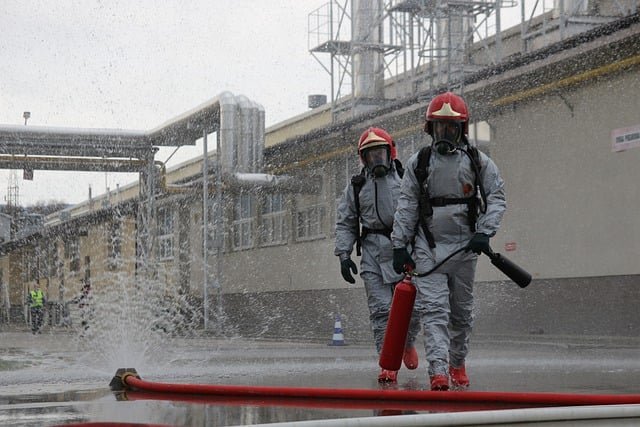Comprehensive Guide to Essential Safety Equipment for All Uses
Safety equipment serves as the first line of defense against potential hazards in various environments, from construction sites to home workshops. Understanding the different types of protective gear available, their proper applications, and maintenance requirements can significantly reduce the risk of injury and ensure compliance with safety regulations. This comprehensive overview explores the essential safety equipment categories, selection criteria, and best practices for implementation across different settings.

Comprehensive Guide to Essential Safety Equipment for All Uses
Safety equipment forms the backbone of injury prevention strategies across industries and personal applications. Whether working in high-risk environments or performing routine tasks at home, the right protective gear can mean the difference between a safe day and a serious accident. Modern safety equipment has evolved significantly, incorporating advanced materials and technologies to provide better protection while maintaining comfort and usability.
Personal Protective Equipment (PPE) for Everyday and Workplace Safety
Personal protective equipment encompasses a wide range of items designed to protect individuals from various hazards. Head protection includes hard hats and safety helmets that shield against falling objects and electrical hazards. Eye and face protection involves safety glasses, goggles, and face shields that guard against chemical splashes, flying particles, and intense light.
Respiratory protection ranges from simple dust masks to sophisticated powered air-purifying respirators, depending on the specific airborne contaminants present. Hand protection includes various glove types made from different materials such as nitrile, leather, or cut-resistant fibers. Foot protection encompasses safety boots with steel toes, slip-resistant soles, and electrical hazard protection.
Hearing protection devices include earplugs and earmuffs designed to reduce noise exposure in loud environments. Body protection involves coveralls, aprons, and specialized suits that protect against chemicals, heat, or biological hazards.
Specialized Safety Gear for High-Risk Environments
High-risk environments require specialized safety equipment tailored to specific hazards. Fall protection systems include harnesses, lanyards, and anchor points for workers at elevated heights. Confined space entry equipment features gas monitors, ventilation systems, and emergency retrieval devices.
Chemical handling environments require specialized suits, emergency eyewash stations, and spill containment materials. Electrical work demands insulated tools, arc flash suits, and voltage detectors. Fire suppression equipment includes extinguishers, fire blankets, and emergency escape breathing apparatus.
Radiation protection involves lead aprons, dosimeters, and specialized shielding materials. Marine environments require life jackets, immersion suits, and emergency signaling devices. Each specialized environment presents unique challenges that require carefully selected protective equipment.
Safety Equipment Selection and Procurement
Selecting appropriate safety equipment requires thorough hazard assessment and understanding of regulatory requirements. The selection process begins with identifying potential risks in the work environment, including physical, chemical, biological, and ergonomic hazards.
Compliance with relevant safety standards such as OSHA, ANSI, or NIOSH guidelines ensures equipment meets minimum performance requirements. Proper fit and comfort considerations affect user compliance and overall effectiveness of protective measures.
Cost-effectiveness analysis should balance initial purchase price with durability, maintenance requirements, and replacement frequency. Bulk purchasing options may provide cost savings for organizations with multiple users. Vendor evaluation includes assessing product quality, technical support, and delivery reliability.
| Equipment Category | Provider | Cost Estimation |
|---|---|---|
| Basic PPE Kit | 3M Safety | $50-150 per person |
| Respiratory Protection | Honeywell | $25-500 per unit |
| Fall Protection System | Miller Safety | $200-800 per system |
| Chemical Suits | DuPont | $100-1000 per suit |
| Emergency Equipment | MSA Safety | $300-2000 per unit |
Prices, rates, or cost estimates mentioned in this article are based on the latest available information but may change over time. Independent research is advised before making financial decisions.
Maintenance and Training for Proper Use of Safety Equipment
Regular maintenance ensures safety equipment remains effective throughout its service life. Inspection schedules should be established based on manufacturer recommendations and usage frequency. Visual inspections check for obvious damage, wear, or contamination that could compromise protection.
Functional testing verifies that equipment operates as designed, particularly important for complex devices like respirators or fall protection systems. Cleaning procedures must follow manufacturer guidelines to avoid damaging protective materials or reducing effectiveness.
Storage conditions affect equipment longevity, requiring protection from extreme temperatures, moisture, and UV exposure. Documentation systems track inspection dates, maintenance activities, and replacement schedules.
Training programs ensure users understand proper selection, use, and care of safety equipment. Initial training covers hazard recognition, equipment limitations, and emergency procedures. Refresher training maintains competency and addresses new equipment or changing workplace conditions.
Hands-on practice allows users to become comfortable with equipment before encountering actual hazards. Training documentation demonstrates compliance with regulatory requirements and supports liability protection.
Safety equipment represents a critical investment in protecting human health and preventing workplace injuries. Proper selection, maintenance, and training create comprehensive protection systems that adapt to various risk environments. Regular evaluation and updates ensure safety programs remain effective as technologies and regulations evolve. Organizations that prioritize comprehensive safety equipment programs typically experience reduced injury rates, lower insurance costs, and improved employee morale.




